When the winds of change bring you a pandemic, you respond with the most health and almost-but-not-medical focused Fitbit you’ve ever seen. Which is essentially the gist of today’s sweeping pile of new feature and hardware announcements. In a virtual presentation and interactive site to/for media that’s worthy of its own post, Fitbit announced three new products with a dizzying array of new features. Almost every feature is focused on health and metrics that could be used to keep you healthy. Which is notably different than trying to keep you fit.
While Google announced their intent to acquire Fitbit a little under a year ago, that hasn’t happened yet – with the two companies still pending regulatory approval (and it doesn’t look like that’s going to finish anytime soon). As such, rather than major changes we would have expected like going to Google’s Wear OS for their premier watch, they’ve stayed the course with Fitbit OS. However, the new Fitbit Sense smartwatch isn’t your father’s Fitbit, at least in terms of pricing. This clocks in at $329USD – the most pricey Fitbit ever made.
Even the also-announced Versa 3 seems to rise in price, up to $229 – albeit, by including more baseline features. Only the new Inspire 2 stays the course, keeping the same $99 price point the previous Inspire HR was launched at.
Now, I’ve got units slated to arrive likely next week – so till then this is a bit of a placeholder on what’s new. Stay tuned for full in-depth reviews intertwined into the crazy fall wearables season. For this post though, I’m going to focus on the Fitbit Sense.
What’s new – Fitbit Sense:
The Fitbit Sense is literally the most correctly named wearable ever. Almost every new feature the company added this year is about sensing data or some metric, and ideally making sense of that data (which, in some cases will require a Fitbit Premium subscription). Here’s the quick run-down of what’s new compared to previous Fitbit smartwatches (this technically would be above the Ionic, but it’s probably more akin to a super-high-end Versa series):
– Added ECG Functionality
– Added Skin Temperature Sensors (on wrist)
– Added High/Low Heart Rate Notifications
– Added Breathing Rate (per minute), while you sleep
– Added New Stress Management Tracking
– Added EDA Scan app for tracking electrodermal activity
– Added Heart Rate Variability (HRV) Tracking
– Added new PurePulse 2.0 optical HR sensor (completely revamped)
– Added Google Assistant (previously had Amazon Alexa, still does have that)
– Added ability to take calls from wrist using mic/speaker (planned Winter 2020-21)
– New AMOLED display with integrated ambient light sensor
– Display is Corning Gorilla Glass 3, and bezel is polished stainless steel
– Changed accessory bands to have better quick release system
– Includes 6-month free trial of Fitbit Premium
Plus, things that were on recent Fitbit units are also here as well:
– Includes GPS built-in (12 hours active GPS time)
– Music storage built-on (supports your own music + Pandora & Deezer offline, Spotify is still phone control only)
– 24×7 HR Tracking, Steps, Sleep, Sleep Stages, and usual activity tracking
– Always-on Display Capable (but cuts into battery life claims)
– Supports Fitbit OS App Store
– Includes Active Zone Minutes (was rolled out last year in some devices)
– Water-resistant to 50 meters
– NFC Contactless Payments via Fitbit Pay
As for battery life, the company claims 6 days of battery life with the non-always on screen setting selected. And, before we dive too far, here’s the full pricing list for the Fitbit lineup this year (units will start shipping later in September):
Ok, let’s dive through some of the features quickly. The most visible change from the outside is the new optical heart rate sensor, called PurePulse 2.0 – which Fitbit says is their most accurate to date. Over the past few years Fitbit has steadily improved the algorithms behind the sensor, and I typically find it does fairly well. However I also usually find that when companies dramatically change optical HR packages, there tends to be a small period of stabilization for a few months where it’s often worse than before. I’m interested in seeing if that’s the case here as well.
Most of the changes we see are driven from either that new sensor package on the back, or other pieces internal to it, which Fitbit brands the Biosensor Core. Everything always sounds cooler with ‘Bio’ and ‘Core’ in there somewhere.
First up is following in the footsteps of Apple and other companies with the addition of an ECG sensor. At launch this is still pending regulatory approval, so the exact timing isn’t clear. But the point is that it will be approved as a medical device, just like the Apple Watch, Withings, and a few others out there.
To take an ECG you’ll wear the watch as normal, and then place your other hand on the bezel of the watch, completing the circuit required. It’ll take the readings, and then determine if there’s any concerning heart rate rhythms and advise you of the results. You can export the results as a PDF to take to a doctor for next steps.
The next new bit of tech is Fitbit’s EDA Scan app, this is an app you run on the watch, and then rest your palm on the face of the watch (the top of it), which will measure electrodermal activity (roughly another word for galvanic skin response) and then apparently feed that into whether you’re stressed or not. Essentially they’re measuring the micro changes in electrical resistance of the skin based on things like sweat. This data is then combined with other factors like heart rate or blood pressure.
Fitbit is hardly the first company to measure elements of stress, nor the first entity to measure EDA. Organizations have been doing so for years in various capacities, even lie detector tests. But it might be the first wearables company to try and pull all these factors together.
This is one that I’ve definitely got to see hands-on (literally) in order to understand exactly how they’re using these pieces to provide actionable information over time.
Next, there’s the new skin temperature sensor, which harkens back to the days of the Basis Watch (before Intel bought them and killed it off):
The Skin Temperature tracking is designed to be more of a nightly thing than an instant thing – which makes sense in terms of trending. However, interestingly, the entire Fitbit Versa family also gets this feature too:
Next, there’s the new high and low heart rate alerts, as well as breathing rate tracking (though, markets will vary at launch for that):
They’ve added heart rate variability tracking as well, something that surprisingly few wearables actually have, despite so heavily leveraging heart rate variability for so many assumptions around other health metrics. In this case, HRV trending metrics are available only to Fitbit Premium users.
And then we’re finally seeing a bit more expansion of the SpO2 metrics Fitbit has long talked about, now with on-device access as well. All users will get an SpO2 clock face, whereas Fitbit Premium users get SpO2 trends over time.
Here’s the Fitbit premium trending features:
Finally, everything else in terms of sports/fitness is basically the Fitbit smartwatches you know of previous years. GPS built-in, optical HR sensor, sport tracking across most sports (but not multisport/triathlon tracking), and hookups with Strava/etc… I’ll dive into all that stuff as part of my full in-depth review.
The notable non-health new features include planned phone call support sometime this winter, with a phone nearby connected via Bluetooth:
And then the planned inclusion of Google Assistance sometime this winter as well, Amazon Alexa is already there.
And, and as always, there’s approximately 18 million colorful and swanky bands to choose from:
The company says the included “infinity” band is improved over years past, but we’ll have to see once I get it on-hand and on wrist.
Wrap-Up:
It’s clear that Fitbit went all-in on health with the new units. While I didn’t touch on the Fitbit Versa 3 here, I will in my full standalone in-depth review of it (and maybe, if today gets a bit less crazy, I’ll do a ‘What’s new’ there too). But that too gained a number of the core underlying features like the new heart rate sensor, and skin temperature tracking.
Of course, the key to all these features is making sense of them. Fitbit talked at length about their prediction capabilities around illness, but also specifically COVID-19. While they are making substantial progress in detecting COVID-19 positive individuals before that person is symptomatic, the reality is that’s all still largely in the research realm – and there isn’t any obvious or clear path to it becoming something that’ll notify you anytime soon on a Fitbit wearable.
Which isn’t to say all these metrics aren’t useful – they absolutely are, and can be. But ECG aside, most of the remaining will be about trending, and about making it obvious to you that the trend line is going in a weird direction. It’s up to you to determine whether that’s worrisome or just because your newborn baby has kept you up for the last two months straight. In other words, there’s no ‘COVID-19 Easy Button Detector’ here.
Still, I think this is substantially in the right direction for Fitbit, at least until the Google partnership takes hold. Ultimately, as previously stated by Fitbit/Google that will result in a Wear OS watch. The challenge there being the inevitability of less battery life compared to Fitbit’s far more optimized Fitbit OS platform.
In any event, I’m looking forward to putting all three new products through the paces in the coming weeks, with full in-depth reviews down the road.
With that – thanks for reading!
FOUND THIS POST USEFUL? SUPPORT THE SITE!
Hopefully, you found this post useful. The website is really a labor of love, so please consider becoming a DC RAINMAKER Supporter. This gets you an ad-free experience, and access to our (mostly) bi-monthly behind-the-scenes video series of “Shed Talkin’”.
Support DCRainMaker - Shop on Amazon
Otherwise, perhaps consider using the below link if shopping on Amazon. As an Amazon Associate, I earn from qualifying purchases. It doesn’t cost you anything extra, but your purchases help support this website a lot. It could simply be buying toilet paper, or this pizza oven we use and love.





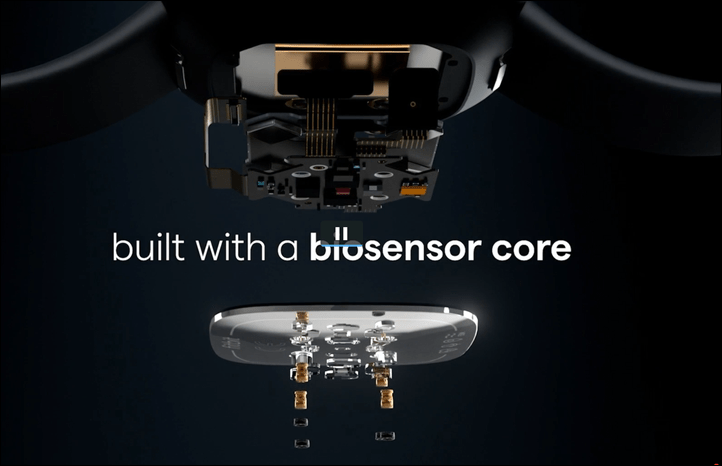
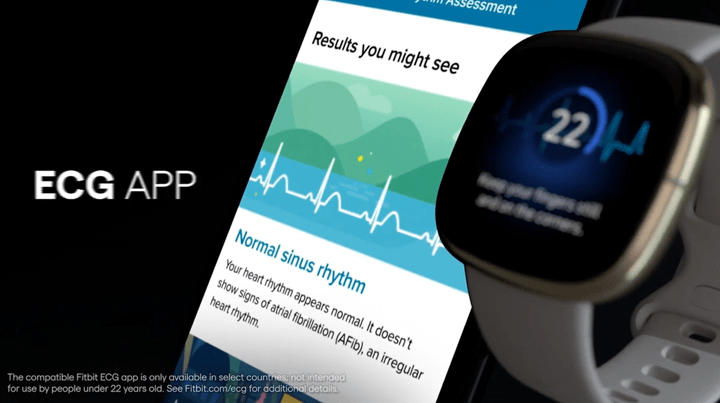

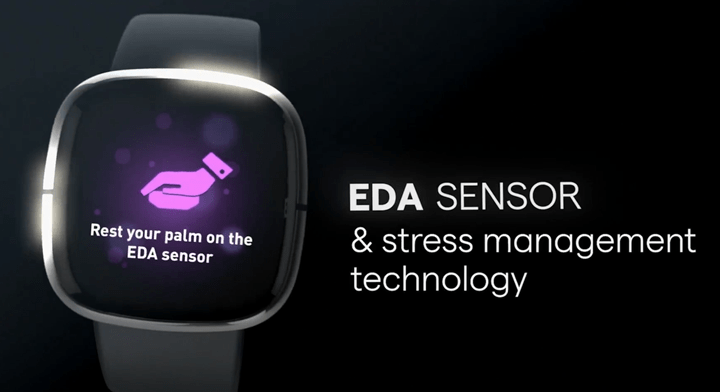
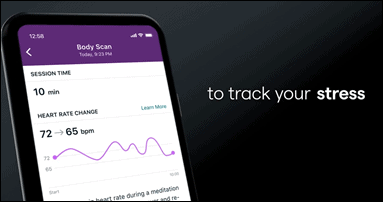

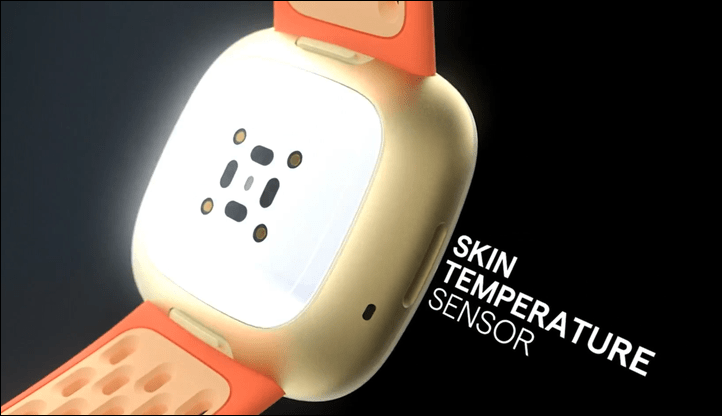
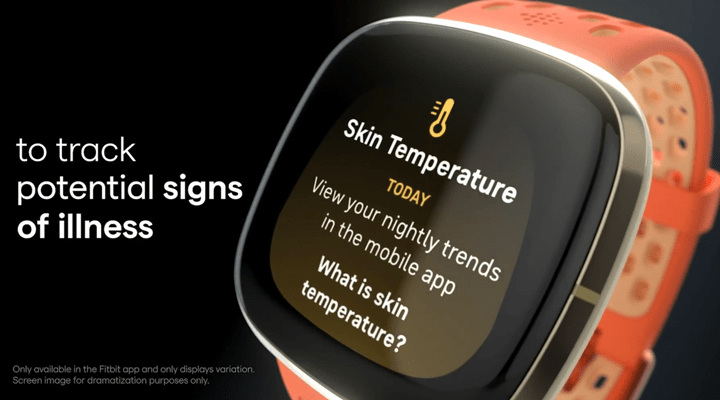






























“As for battery life, the company claims 6 hours of battery life with the non-always on screen setting selected.”
Maybe days?
Correct, sorry, days there. Though 12 hours for GPS-on.
Ray are they leveraging the SpO2 sensor to track sleep apnea?
They leverage the sensor to provide relative changes, but I don’t believe they’ve actually released Sleep Apnea-specific guidance (but have talked a lot around it in recent years).
Having come from Fitbit (Ionic, Blaze, etc), while this looks very promising for their user groups, I wonder how many of these metrics will actually be available at launch? The Ionic was supposed to have SP02 readings but it look them an impossibly long time to actually implement.
I also find that fitbit’s customer service has always been lacking. So you get a rushed to market product without the actual functionality turned on with no real answers from customer service on when you will get those features. You find their forums littered with people who buy these watches then return them b/c it tracks 10,000 extra steps a day or doesn’t do the things that are advertised.
That all being said, it’s great to see them pushing the envelope here and at a competitive price point. That can only mean great things for the end users as other watchmakers will inevitably try to match features to at least some extent.
Yeah, tracking which metrics are and aren’t available at launch was making my head spin, especially when overlaid with which metrics are Premium vs Not. It’s something I’ll probably try and tackle once I actually get a unit hands-on.
I completely agree that Fitbit has often talked about features in the health arena to see them drag out for long periods of time. I worry some of the ‘Winter’ type features might fall into that camp.
New features sound great but still no ability to connect to a chest strap?
This launch would appear to be the formal (expected?) admission they’re not looking to compete in the meat of the exercise tracking market.
With that, looks like fitbit has deep-sixed any mention of the Ionic on the website.
Looks pretty cool, but in order for me to wear something like this the insights better be very valuable enough to replace my other wearable. The major downside is I already wear my Fenix 5c everyday to track my activities. I can’t imagine having to wear two watches all day to get value out of this. I really need an all in one solution, but glad Fit Bit is pushing the envelope on this. I know the regulatory approvals are extremely hard to get!
I’ve been wearing a Garmin and an Apple Watch for the last 3 years. You get used to it (in spite of feeling like a poor copy of Ray ?)
Why do you wear both? I can understand the garmin for actual sport activities but both of them all day?
Same Apple+Garmin person here.
For me reason to wear Garmin is to get the overall metrics from it – I find that body battery replicates my perceived exertion quite well and stress levels are also interesting. Notification and the whole “samrt” experience, on the other hand, is quite crappy in comparison with Apple Watch, so I’ve disabled all phone notifications on Garmin.
You can grab a free app called Training Today for Apple Watch. It matched up pretty well against Garmin body battery (which I was testing on my old Vivosmart 4).
What happens to all this essentially medical data that they will be collecting? Does it stay in the watch, or on the phone, or is it all processed centrally? What regulatory regime applies – GDPR? Does Fitbit share it with third parties? How good is their data security?
It’s owned by google,
So 0 privacy lgoically
Another device that will track your sleep but you can only use it their garden (and I am including Apple here too). I have a sleep sensor that at least I can export to CSV and directly uploads my metrics to Training Peaks. I would consider this device if I could actually export it but without that its DOA for me. I don’t want ANOTHER subscription, I have enough as it is already and want less not more (yes less is more sometimes). Anyway its still a great effort by them and I am interested to see what happens when the FitBit acquisition is approved (its going to get approved trust me).
I wonder if there will be a Scientology mode, you know, to get rid of those unwanted body thetans.
Looks interesting. One of the things I’ll be curious about in your deep dive for this is the ability to adjust text size. Having reached the age where I need reading glasses I find that unless there’s a way to make text size larger, there’s no way to see the info on many smart watches while working out.
For the Google Assistant and phone call support — does this watch have a mic and speaker?
Not very familiar with Fitbit products, but more interested now that Google owns them.
Microphone yes, but audio speaker is frankly a bit confusing at this point based on the wording. I’ll get some clarification.
Update: Confirmed, both Versa 3 & Sense have both speakers and microphones.
Also, more details on the topic (but not that detail), here: link to fitbit.com
Thanks for the follow-up!
I wish Garmin would add these features.
Essential for everyday wear stuff, though Pixel Buds 2 are largely taking care of those functions, for me.
No thanks!
A microphone on your wrists which will function pretty poor? No thanks. I forgive it on my phone, because of calling, but on a watch? Nah. When you cal, with your applewatch, you’re barely audible for the other side
I adored Fitbit and have bounced between Fitbit, Garmin, and Apple Watch many times and over various models. One thing my friends and I have noticed is Fitbit support has diminished dramatically. Their devices are as flimsy as ever but you are far more likely to get a 30% credit towards a new device than a replacement these days. I don’t consider myself hard on devices but Fitbits just seem so fragile.
Is there any decent heartrate monitor and fitness tracker that respects privacy and doesn’t sell your information? I am under the impression that Fitbit and Google both keep tabs on personal info. Do you know if this is true? Thank you.
Garmin doesn’t sell (or give) any data, nor does Suunto or Polar.
Even Fitbit says quite clearly they don’t. They also said as part of the acquisition they have no plans to sell your data – “The company never sells personal information, and Fitbit health wellness data will not be used for Google ads.”
Of course, that doesn’t much matter at the moment, since Fitbit isn’t part of Google yet. Also, one can decide whether or not they believe companies, but in general with GDPR and the way leaks work, for all the majors it’d get out pretty quick if they were selling PII data.
Remember the same was said when facebook bought instagram and whatsapp?
That didn’t age very well either.
Don’t trust google, they’ve proven over and over again that they can’t be trusted. Just like disabeling location history, doesn’t disable location tracking, but just doesn’t show it to you the user.
Devices are very cool, but this concept of “buy a device now and then pay us a fee to use all of its features” is very annoying.
Yup, I agree – especially for such a premium price point.
That said, it’s the trend, and I don’t suspect it’s one going away anytime soon.
What could be interesting though, is a device offered as part of a subscription. So you pay for something like Fitbit Premium Plus and get a Fitbit as part of your subscription (akin to what we have with cell phone plans).
Whoop! Whoop offers this for their heart strap and analysis at $30/month. That’s $720 (excluding discounts) for 2 years. For that price you can get an Oura Ring and Forerunner/Vivoactive, and these will still work after 2 years.
Yes, but it gives rather questionable data.
The price looks reasonable though.
“For that price you can get an Oura Ring and Forerunner/Vivoactive, and these will still work after 2 years.”
Or you could just buy a lot of wine and drink yourself to sleep. It’ll increase your sleep without having to look at data and make guesstimates if said Whoop data is correct.
That’s the model for Whoop and the upcoming Amazon Halo. Whoop is crazy overpriced though, and just kinda bad hardware.
#truth!
?
Anyone else feeling meh?
If they want to do something helpful in the pandemic, why not bring contact tracing (PEPP-PT) to the watch?
I’d much rather have it in my watch than in my phone. Sometimes I take the underground to a park to go for a run. I don’t carry the phone, because it is heavy and big. I don’t take the phone with me in the gym as well.
These watches do have Bluetooth LE so it could be done.
Yes, I think Bluetooth contact tracing is useful. I have had a warning on my phone already (in Berlin).
It looks like ECG and Spo2 aren’t available on the UK edition. They aren’t listed in the features/spec on the fitbit website. Maybe due to some government restrictions?
At a glimpse, this seems like a really good product for someone like me: casual runner, Android user.
I currently have a Vivoactive 3 and I honestly never use most of the more in-depth features. I track runs with it, but never any of the training functionality. What I want out of a wearable is heart rate, added health features, steps, calorie-out estimates and good notifications.
Cycling is where I need more data and that’s why I have an Edge 1030 + chest strap.
Assuming that Fitbit has cleared up some of the QA issues that plagued the Versa and Ionic, I’ll likely be getting this.
Thanks for the interesting news
Is the SpO2 sensor going to be certified medical grade? My understanding is that the finger clip devices you can buy at the pharmacy as well as what Garmin provides are not (and are reliable only in extremely broad strokes, i.e., a reading of 95% means “I am probably above 90%”), while true medical-grade ones are only available by Rx or to clinicians. The tracking *could* be really interesting, but only if the data isn’t garbage.
“They’ve added heart rate variability tracking as well, something that surprisingly few wearables actually have, despite so heavily leveraging heart rate variability for so many assumptions around other health metrics. ”
Spot on, I want to see the HRV numbers, not just ‘stress’, body battery, etc.
I like Nightly Recharge on Polar but they don’t have a week/month/summary view of HRV. If Fitbit has good metrics for HRV, the Sense might be an alternative to something like Biostrap. But sounds like HRV is behind the Fitbit Premium subscription.
I really like the Whoop concept but like you I found the HR sensor itself was just bad. I’m still looking for something to better help me manage recover, mainly focusing on things like sleep, diet, etc. I’ve really found HRV overnight corresponds to how I feel the next day and I’d like to track it over time.
Looking forward to the full review!
It seems that Fitbit is trying to jump into the Covid monitoring monitoring market. Oura ring is already in that market. Oura ring has made deals with several sports teams, and is already being used for a long term research project.
The EKG is only good if it is medical grade. Kardia is one company in that space – app and hardware for 2 finger EKG, along with Dr/Cardiologist integration, and monthly reports.
As Ray, others, have commented – when will Fitbit offer a fully baked solution, not just bits with pieces missing. Plus what happens when Fitbit becomes Google Fitbit with Wear OS.
Observation on Oura ring – they stop at ring size US 13. I have large but not too large hands. Their size 13 ring only fits on my pinky fingers. If I try a different finger I almost have to do the thread to compress the skin trick to get the ring off.
Could this be a whoop killer
I think it could be a Whoop impacter longer term, but not short term. Nothing at this point seems focused on the gym/athlete site in terms of recovery/etc. But this is literally the starting line for Amazon. If we know anything about Amazon, it’s to assume they’ll be doing laps around the competition before we know it.
While they have failed at various hardware projects over the years, the failures are getting fewer and fewer.
Thanks for the article!
I don’t really know the fitbit devices but I’ve heard that the “smart” in smartwatch is not that great compared to e.g. Samsungs Watches.
I am currently using the Gear S3 Frontier and I can’t imagine using a smartwatch/phone combo that does not push all the notifications from threema, whatsapp, gmail, discord, phonecalls, … to my wrist. Will the Sense allow me to keep that or would I miss something in that area? I think that I’ve read something about “you can configure an (one!) app for ‘messenger notifications’ ” – this would be an issue for me because I use several of them.
Do you have any insights on that?
Thanks
What I would like is an overview of what is offered in Premium subscription only. Heard comments that you don’t even see history of heart rate during sleep. I understand that they charge for certain Interpretation of data and some other forms of active programs, but what else is hidden compared to something like Samsung, Polar, Garmin…
Is there a full review coming soon? I really need a new watch and fitbit seem to have brought, on paper, a solid health watch, very interested to see if good for fitness too. I guess with all the new Garmin watch reviews coming shortly the review for this is delayed a bit…
I can only write reviews when I have units in-hand. Some companies do a better job ensuring products are in-hand than others. And some companies hold back products for reviews until later in the announcement cycle (usually for PR reasons).
Fitbit has in recent years ‘gapped’ their announcement from reviews. Meaning that on announcement day there’s limited, if any, people who had access to a unit – and those aren’t permitted to say ‘review’. And then usually about 2-3 weeks later they get devices out and a specific review embargo date. Similar to how Apple does it.
Anyways, more as soon as I can…
How big is the watch? I comparison with other watches would be cool, the girl has small wrists.
Yup, will include in a full in-depth review for sure.
Wondering if the HR sensor is going to be significantly better. Also wondering if they will FINALLY allow for in exercise HR notifications ala Garmin. Would be nice to know if I’m above or below my target HR “window” without constantly looking down at the watch. And too much to ask to allow external HR straps/monitors?
Interested in the Versa 3. I’ve used an old Polar M400 for activity and workout tracking for the last few weeks. I’ve actually been very impressed with the way the polar ecosystem tracks activity into no, low, medium and high intensity activity. But the watch is not exactly a looker! Do Fitbit do the same or are the activity metrics just based around steps and workouts?
Fitbit Sense is now a medical device – Fitbit Earns FDA, EU OK for ECG App to Spot AFib
link to mpo-mag.com
Fitbit has received 510(k) clearance from the U.S. Food and Drug Administration (FDA), as well as CE marking in the European Union, for its electrocardiogram (ECG) app to assess heart rhythm for atrial fibrillation (AFib), a condition that affects more than 33.5 million people globally.(1) The Fitbit ECG App, unveiled in Fitbit’s recent fall product launch, will be available in October 2020 to users on Fitbit Sense in the following countries: the United States, United Kingdom, Germany, Austria, Luxembourg, the Netherlands, Sweden, Switzerland, Czech Republic, Poland, Belgium, Portugal, Romania, Ireland, Italy, Spain, France, Hong Kong, and India.2,3
Would anyone know if this or other watch tracks fencing as an activity? I have a Whoop that does and an thinking of leaving that platform. Thanks!!
Hi,
I am the current owner of Fitbit Charge 2. I am having trouble with the assisted GPS, whereby the unit will disconnect every now and then when I am doing my cycling. Is a similar problem can happen with Fitbit Sense? I am currently contemplating a replacement for my Charge 2.
Halim